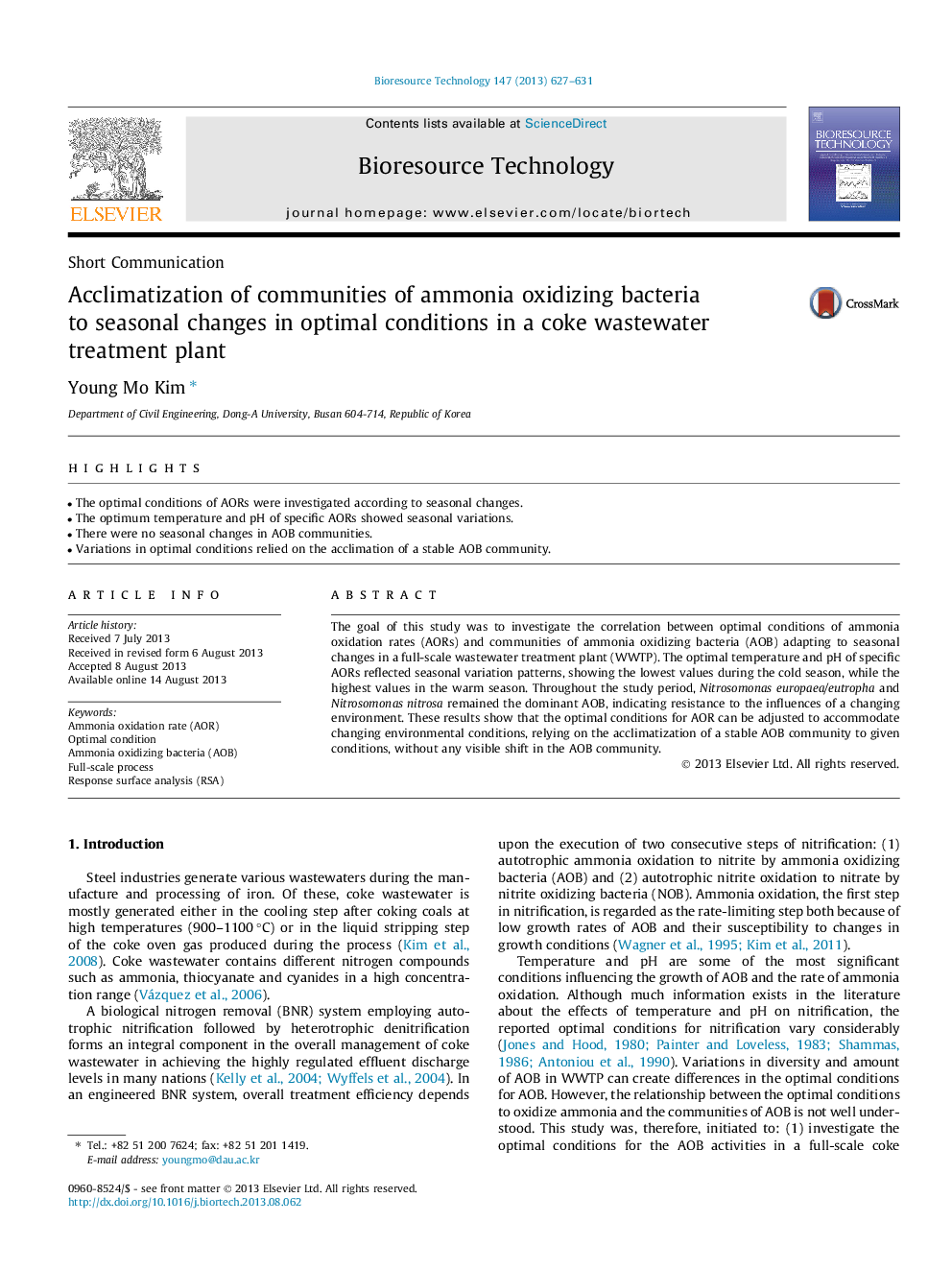| Article ID | Journal | Published Year | Pages | File Type |
|---|---|---|---|---|
| 7081326 | Bioresource Technology | 2013 | 5 Pages |
Abstract
The goal of this study was to investigate the correlation between optimal conditions of ammonia oxidation rates (AORs) and communities of ammonia oxidizing bacteria (AOB) adapting to seasonal changes in a full-scale wastewater treatment plant (WWTP). The optimal temperature and pH of specific AORs reflected seasonal variation patterns, showing the lowest values during the cold season, while the highest values in the warm season. Throughout the study period, Nitrosomonas europaea/eutropha and Nitrosomonas nitrosa remained the dominant AOB, indicating resistance to the influences of a changing environment. These results show that the optimal conditions for AOR can be adjusted to accommodate changing environmental conditions, relying on the acclimatization of a stable AOB community to given conditions, without any visible shift in the AOB community.
Related Topics
Physical Sciences and Engineering
Chemical Engineering
Process Chemistry and Technology
Authors
Young Mo Kim,
